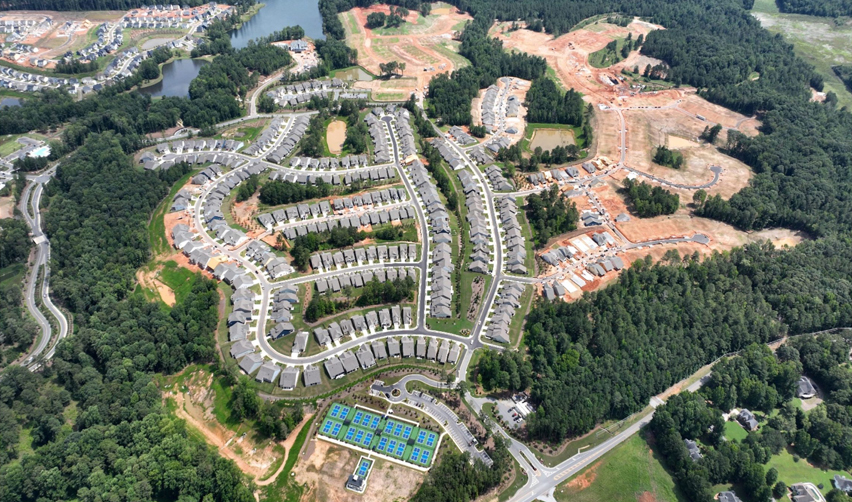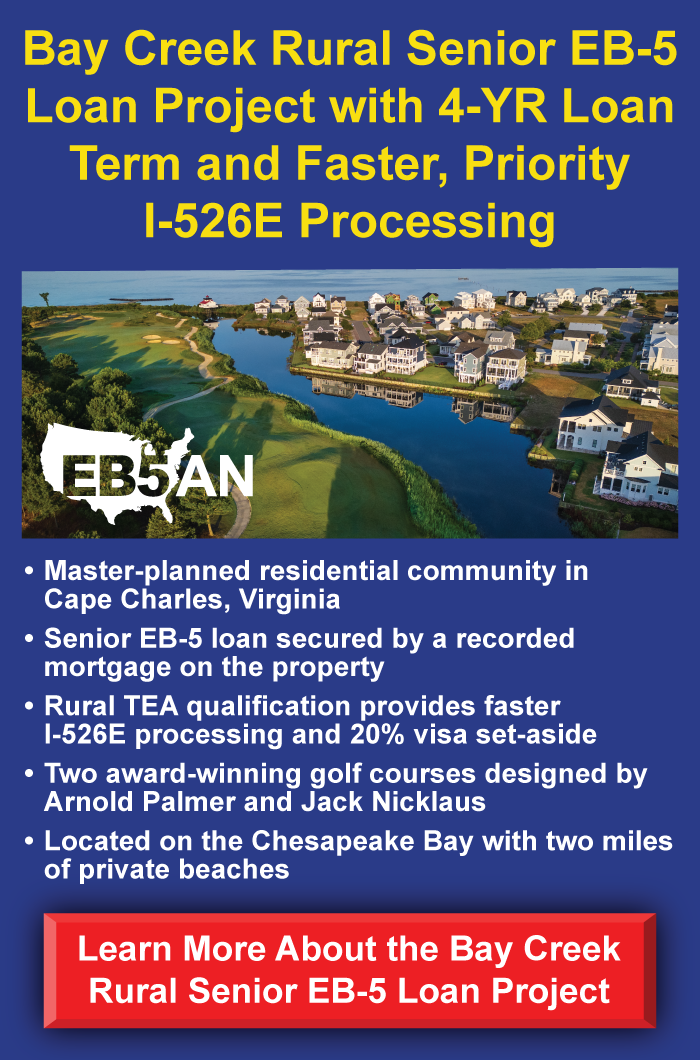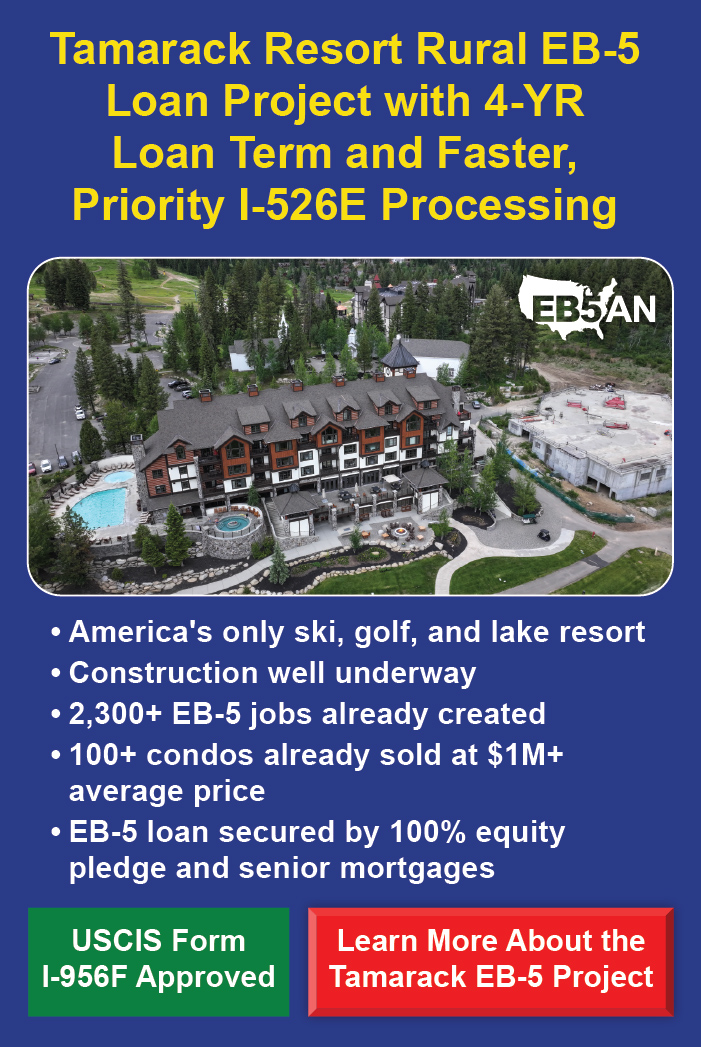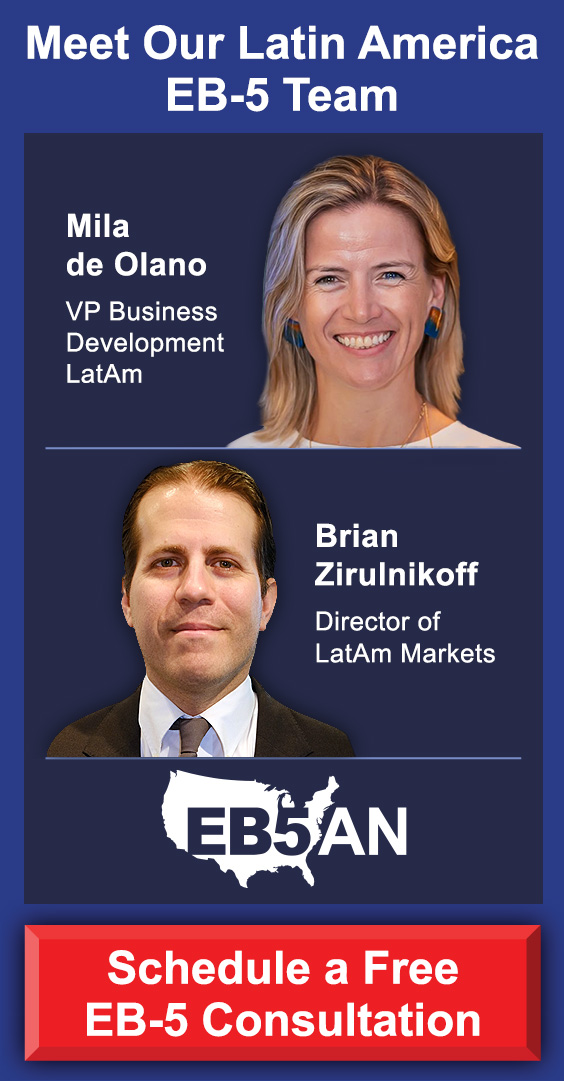Twin Lakes Georgia is a 1,300 single-family home community development located just outside of Atlanta, Georgia.
It is one of the most compelling rural EB-5 projects available today at $800,000.
Overview of the Twin Lakes Georgia EB-5 Project
Understanding EB-5 Investment Financial Risk
Understanding Rural TEA Designation
Evaluating Rural EB-5 Projects
Twin Lakes Georgia Is a Best-in-Class Rural EB-5 Project
- Unparalleled Financial Security
- Experienced Development Team
- Strong Financials
- Proven Single-Family Home Market
- An Experienced, Independent Regional Center
- Thousands of Qualifying EB-5 Jobs Already Created
Twin Lakes Georgia: A Unique, Low-Risk Rural EB-5 Project
Overview of the Twin Lakes Georgia EB-5 Project
Secured EB-5 Loan Structure. The Twin Lakes Georgia offering is structured as a secured loan. The entire balance of the EB-5 loan is secured by a diversified Kolter parent company’s substantial assets and net equity. EB-5 loans with repayment guaranties are extremely rare. Secured EB-5 loans are virtually non-existent for rural EB-5 projects.
Individual EB-5 Investor Loan Tranches. The EB-5 loan is divided into individual tranches of $800,000—one for each foreign investor. Each EB-5 investor’s loan term is five years and starts when that investor’s funds are invested in the project.
Rural TEA Designation. The project is in a rural targeted employment area (TEA). Rural TEA designation qualifies EB-5 investors for a reduced minimum investment of $800,000, priority processing of Form I-526E, and access to EB-5 visas reserved for rural investments. Rural EB-5 visas make up 20% of the total EB-5 visa supply.
Thousands of Qualifying EB-5 Jobs Already Created. Construction is already underway. As of December 31, 2023, nearly 3,000 qualifying EB-5 jobs have already been created.”
I-526E Approval Refund Guaranty. The project provides for the accelerated repayment of any EB-5 investor who does not receive Form I-526E approval.
Independent EB-5 Oversight. EB5AN controls the regional center and the general partner of the EB-5 investment fund for Twin Lakes Georgia. EB5AN is 100% independent from and unaffiliated with the developer. Independent third-party oversight of EB-5 projects avoids conflicts of interest and reduces risk for EB-5 investors.
Excellent Developer Track Record. The Twin Lakes Georgia project is being developed by the Kolter Group, an experienced master-planned community developer. Kolter has completed over 100 residential projects, delivered over 27,000 units, and never failed to repay a loan. Kolter has worked with EB5AN on over 20 prior EB-5 projects. All EB-5 investments in Kolter projects are either in good standing or have been repaid.
Affordable Single-Family Home Development. Investments in affordable single-family home community development projects are relatively safe. Twin Lakes Georgia stands out, offering affordable homes close to a major metropolitan area. As of February 1, 2024, more than 600 homes have already been sold. Strong sales show clear market demand for the product type and price point that Kolter offers.
These features make Twin Lakes Georgia a best-in-class rural EB-5 project that stands out among the other EB-5 investment options on the market today. Below, we examine each of these topics in greater detail.
Understanding EB-5 Investment Financial Risk
For EB-5 investors to qualify for Green Cards, their investments must be considered “at risk.” Each investor’s entire $800,000 investment must be at risk of loss. As a result, no EB-5 project can be 100% risk free and compliant with the EB-5 program.
Many EB-5 projects, however, are much more financially risky to EB-5 investors than is necessary. EB-5 investors often do not realize how risky a project is until they lose their money and fail to qualify for a permanent Green Card.
While EB-5 projects are supposed to be transparent, the reality is that EB-5 investors need to carefully examine a project before investing. Few projects offer any real financial protections to EB-5 investors. But some do.
Following are several key characteristics of EB-5 projects that reduce financial risk:
Financial Transparency. Investors should have access to documents that prove the financial claims made by a project. For example, if a project says it has a senior loan, EB-5 investors should be able to review a copy of the loan agreement. Sales figures, financial statements of the project development company and any guarantor companies, should be available to review. If an EB-5 project is unwilling to share these kinds of documents, it suggests they are hiding key details from investors. Lack of transparency is a big red flag.
Repayment Guaranty. EB-5 loans are rarely secured by any kind of collateral. Some projects have equity pledges, but these do not add much security. Lower-risk projects will have repayment guaranties. Ideally, an EB-5 loan repayment guaranty is from a diversified holding company that has more than enough assets and net equity to secure the loan.
I-526E Approval Refund Guaranty. If an EB-5 investor’s Form I-526E is denied by USCIS, his or her $800,000 may have to remain invested in the EB-5 project. The best EB-5 projects have an unqualified refund guaranty in place from a well-capitalized company that ensures an accelerated return of EB-5 investor funds in the event of an I-526E denial.
Individualized Loan Term. Most EB-5 loans have a single loan term for all investors. The loan may have a term of five years plus multiple extensions, and on top of that, the term may not begin for a year or more depending on the loan term start conditions. The best EB-5 loans are structured simply: the term starts for each EB-5 investor when his or her investment is loaned to the project.
EB-5 investors should never invest in a project without evaluating the financial risks involved. By understanding these risks and asking the right questions, EB-5 investors can make informed decisions and limit their risk of loss.
Understanding Rural TEA Designation
To be a TEA, a project site must be in a rural area or an area with a high unemployment rate compared to the U.S. average. Some public infrastructure projects may also qualify for TEA benefits.
For an area to qualify as a rural TEA, it cannot have a population of more than 20,000 people or border a city with more than 20,000 people. Also, rural TEAs cannot be in metropolitan statistical areas (MSAs). Applications for rural TEA status must have evidence from the most recent 10-year U.S. census data that the area qualifies.
EB-5 projects in rural TEAs offer significant benefits to EB-5 investors. The minimum EB-5 investment for TEA projects is $800,000 instead of the standard amount of $1,050,000. Foreign investors in rural TEA projects also qualify for set-aside EB-5 visas, which may let them complete the EB-5 process more quickly. Also, investors in rural TEA projects benefit from faster Form I-526E processing. Form I-526E is the first application in the EB-5 immigration process.
Due to their locations, however, rural EB-5 projects can have different risks than urban projects. To make informed choices, EB-5 investors need to know the specific risks associated with rural projects.
Comparing Risks in Different Types of Rural EB-5 Projects
While all EB-5 investments carry some risk for EB-5 investors, certain types of projects are riskier than others. Before making an EB-5 investment, a foreign national should consider each project’s specific risks. Rural projects can carry more risk than projects of the same type that are located in urban areas, but not always. Some kinds of projects, though, are not as well suited to rural areas.
Three common types of rural EB-5 projects are hospitality, manufacturing, and master-planned community developments. Each of these types of project types presents certain risks in a rural setting.
1. Risks in Rural EB-5 Hospitality Projects
Hotels and other hospitality businesses depend on consumer travel and spending. As a result, these types of business are greatly impacted by changes to the economy. During economic downturns, fewer people travel. Those who do are often looking for less expensive options.
Hotel and hospitality projects in rural locations may not experience enough market absorption. Market data for a rural area may not be available or may be limited. This means a new hotel or business will have an unpredictable effect on the local economy. Since rural hotels and hospitality businesses rely on travel, they may fail to earn a profit without enough traffic. A project that has too little data to show it is viable means greater financial risk for EB-5 investors.
Hotels must be fully staffed to operate. As a result, scaling back operations may not be an option. Many rural hospitality projects opt to fire their employees and close down rather than lose money. Such a choice would be disastrous for EB-5 investors. They may lose their investment and have their immigrant petitions denied.
Furthermore, hotels and hospitality businesses often must spend substantial sums of money upfront, years before they start to earn any revenue. EB-5 investors in these kinds of projects face significant financial risk. If development is delayed for some reason, EB-5 investors also face increased immigration risk.
2. Risks in Rural EB-5 Manufacturing Projects
According to the U.S. Department of Agriculture, rural manufacturing has been on the decline. From 2001 to 2015, total U.S. employment grew by nearly 7%. During the same period, manufacturing job growth went down by 21%. In other words, rural manufacturing became a smaller part of the overall U.S. economy. Two separate recessions during this period caused many rural manufacturing plants to permanently shut down.
Rural manufacturing plants are profitable only when running at full capacity. This means that most plants cannot scale back production during an economic downturn. Instead, they are forced to close rather than operate at a loss. Rural plants are highly susceptible to economic downturns. As a result, rural manufacturing EB-5 projects are riskier for EB-5 investors.
Like hotels, the time and cost to develop manufacturing plants are far greater compared to building homes and amenities in master-planned communities. While manufacturing facilities require massive spending over a period of years before they can earn any profits, a house can be built and sold in a matter of months. For manufacturing plants, cost increases may result in insufficient funds to complete development. Raising more capital through loans or other investments could take time. Supply-chain issues during construction can also cause delays. These delays may negatively impact EB-5 job creation.
Together, these factors can cause EB-5 investor funds to be committed for long periods. These projects also often entail greater risk that EB-5 funds will not be repaid.
3. Risks in Rural EB-5 Master-Planned Community Projects
Like hospitality and manufacturing projects, rural master-planned community development projects can be vulnerable to economic downturns. Changes in the local housing market may directly impact construction activities. A slowdown in construction could in turn affect EB-5 job creation.
Unlike hospitality and manufacturing projects, however, master-planned communities are built in small stages. Each house to be built is only one small part of a much larger project.
Houses and lots are often sold before building begins. As a result, spending often happens at the same time as earning. Financial risk is reduced since short-term investments are directly tied to revenue cash flows. Also, construction pace can be adjusted to reflect current market conditions.
For hospitality and manufacturing developments, the developer takes on cost increases. But in housing, homebuyers typically absorb any cost increases.
For these reasons, master-planned community developments may carry lower financial and immigration risks for EB-5 investors and may increase the likelihood of a timely return of their money.
Benefits of Selecting a Rural EB-5 Project
While rural EB-5 projects may mean added risks to EB-5 investors when compared with similar urban projects, investing in rural projects does have benefits. These benefits can make the added risk entirely worthwhile.
The reduced amount of $800,000 for investments in TEA projects helps mitigate the higher financial risk of investing in rural projects. Also, by investing in rural TEA projects, EB-5 investors can access reserved EB-5 visas. These set-aside visas are especially helpful for investors from countries facing EB-5 visa retrogression (i.e., the demand for EB-5 visas is greater than the supply). With reserved EB-5 visas, investors can avoid the long waits tied to visa retrogression. Such investors can often immigrate to the United States years earlier than otherwise possible. In effect, reserved visas allow investors to skip ahead of other EB-5 visa applicants.
Under the EB-5 Reform and Integrity Act of 2022, 20% of all EB-5 visas are set aside for rural TEA investors and their qualifying family members. The rural category has the largest supply of reserved visas. The high-unemployment TEA category and infrastructure category represent just 10% and 2% of all EB-5 visas, respectively.
EB-5 investors in rural TEA projects also benefit from priority processing of their Form I-526E applications. Priority processing means faster adjudication times and shorter wait times for U.S. Green Cards.
Evaluating Rural EB-5 Projects
Some initial research can help investors avoid risky rural EB-5 projects.
EB-5 investors can help keep their investment safe by thoroughly vetting developers. Investors should confirm that the development team has ample experience and a good track record. A project that has the backing of an institutional lender is safer because banks do their own careful due diligence.
Investors need to assess how much equity the developer has put into the project. They also need to check whether the developer is planning to use EB-5 funds to replace or recapitalize their equity. When a developer uses EB-5 capital to repay their equity, their risk is reduced while EB-5 investor risk is increased. Prospective EB-5 investors should avoid projects where the developer replaces all of its equity with EB-5 funds.
The type and location of a project are also key factors to consider. For instance, a rural hotel project in a low-traffic, low-tourism town is riskier than one in a major travel and tourism hub. EB-5 investors should research each project to learn whether it is viable in the current market.
Additionally, Kolter has extensive EB-5 experience. Kolter has collaborated with EB5AN on more than 15 prior EB-5 projects. These prior projects have been financially successful, which for EB-5 investors has resulted in ample job creation that fulfills the requirements of the EB-5 program. All prior adjudicated EB5AN–Kolter EB-5 projects have been approved by USCIS.
Now, more than 15 prior ever, inexperienced regional centers with no track record of success in the EB-5 industry pose significant risks to EB-5 investors.
Twin Lakes Georgia Is a Best-in-Class Rural EB-5 Project
Twin Lakes Georgia is a unique rural EB-5 project that offers a mix of features that limit both financial and immigration risk for its investors. The project is led by a highly experienced development team with a spotless EB-5 track record. It offers investors unparalleled financial safety. Proven market fundamentals, an independent regional center, and thousands of qualifying EB-5 jobs already created make Twin Lakes Georgia one of the most compelling rural EB-5 projects on the market.
Unparalleled Financial Security
Most EB-5 loans are entirely unsecured. Twin Lakes Georgia is different.
EB-5 funds will be invested in Twin Lakes Georgia as a secured loan. A diversified Kolter parent company has executed a repayment guaranty, securing the EB-5 loan with its substantial assets and net equity. This repayment guaranty sets Twin Lakes Georgia apart from most EB-5 loan offerings. No rural EB-5 project we are aware of has such a guaranty from an equally well capitalized and diversified guarantor company.
The project also has an I-526E approval refund guaranty. This guaranty provides for the accelerated repayment of any EB-5 investor who does not receive I-526E approval. This means that if an investor’s immigrant petition is denied, his or her investment will promptly be returned.
Experienced Development Team
Kolter is an experienced developer, with more than 20,000 homes built and a track record of successful real estate development that goes back to 1997. As one of the top 25 largest privately held home builders in the United States, Kolter has more than $29 billion of expected value in residential, commercial, and hospitality transactions. With an operational footprint in the southeastern United States, Kolter’s market and sector knowledge has positioned the firm to capitalize on emerging trends in U.S. real estate.
Additionally, Kolter has extensive EB-5 experience. Kolter has collaborated with EB5AN on more than 10 EB-5 projects. These projects have been financially successful, which for EB-5 investors has resulted in ample job creation that fulfills the requirements of the EB-5 program. All prior adjudicated EB5AN–Kolter EB-5 projects have been approved by USCIS.
Kolter has never failed to repay a loan. This sterling reputation has allowed Kolter to build strong, long-term relationships with major U.S. banks. Kolter has obtained loans from some of the nation’s largest banks. All EB-5 investments in prior EB5AN–Kolter EB-5 projects remain in good standing or have been repaid by Kolter.
Strong Financials
Developer equity is a key part of Twin Lakes Georgia’s total funding. Since the project’s homes will be built and sold over a long period of time, much of the capital required to develop the project will be recycled as homes are built and sold. This reuse of capital greatly reduces the financial risk of the project.
The development of Twin Lakes Georgia does not depend on EB-5 investment. No minimum amount of EB-5 capital needs to be raised.
Proven Single-Family Home Market
The single-family home market around the Twin Lakes Georgia project site is highly active. More than 580 homes at Twin Lakes Georgia have already been sold. Kolter’s market and sector knowledge of the region have driven sales in Twin Lakes Georgia. The long-term trend for single-family home supply in the United States is 30% below the historic average, which leaves significant room for growth.
In particular, a growing number of seniors are moving to Sunbelt states like Georgia, and so demand continues to exceed supply. Twin Lakes Georgia offers affordable homes priced from $296,000 to $502,000. Competitive prices and Kolter’s focus on quality make Twin Lakes Georgia a great choice, especially for retirees.
An Experienced, Independent Regional Center
EB5AN is the regional center sponsor for Twin Lakes Georgia. Since it is totally independent from the developer, the regional center can focus on meeting the needs of the EB-5 investors without conflicts of interest. EB5AN is an experienced EB-5 regional center operator. It has facilitated more than $1 billion of investment under the EB-5 program, and its total project development costs exceed $4.1 billion.
EB5AN’s world-class, low-risk investment offerings have served more than 2,300 immigrant investors from more than 60 countries.
Siddarth was impressed by the fact that everything EB5AN had in its marketing materials for the Twin Lakes rural EB-5 project checked out in his research.
Thousands of Qualifying EB-5 Jobs Already Created
Each EB-5 investor must show that his or her investment created at least 10 new, full-time, qualifying jobs for U.S. workers. Projects sponsored by a regional center can count both direct jobs on their payroll and indirect jobs that result from the project’s construction spending and revenue creation.
As of December 31, 2023, Twin Lakes Georgia has created nearly 3,000 qualifying EB-5 jobs. Beyond this, the Twin Lakes Georgia project is expected to create 6,934 qualifying jobs for EB-5 investors. As a result, investors in Twin Lakes Georgia will enjoy an ample job creation cushion and higher chances of a successful immigration process.
Twin Lakes Georgia: A Unique, Low-Risk Rural EB-5 Project
No EB-5 project can fully mitigate all risks to its investors. Financial and immigration risks are simply a part of the EB-5 program. But some projects do a better job than others at reducing these risks.
Twin Lakes Georgia offers several unique features that mitigate both financial and immigration risks and provide unparalleled safety to its investors.
For more information on the Twin Lakes Georgia project or other rural area projects, please schedule a one-on-one call with EB5AN or send an email to info@EB5AN.com.














